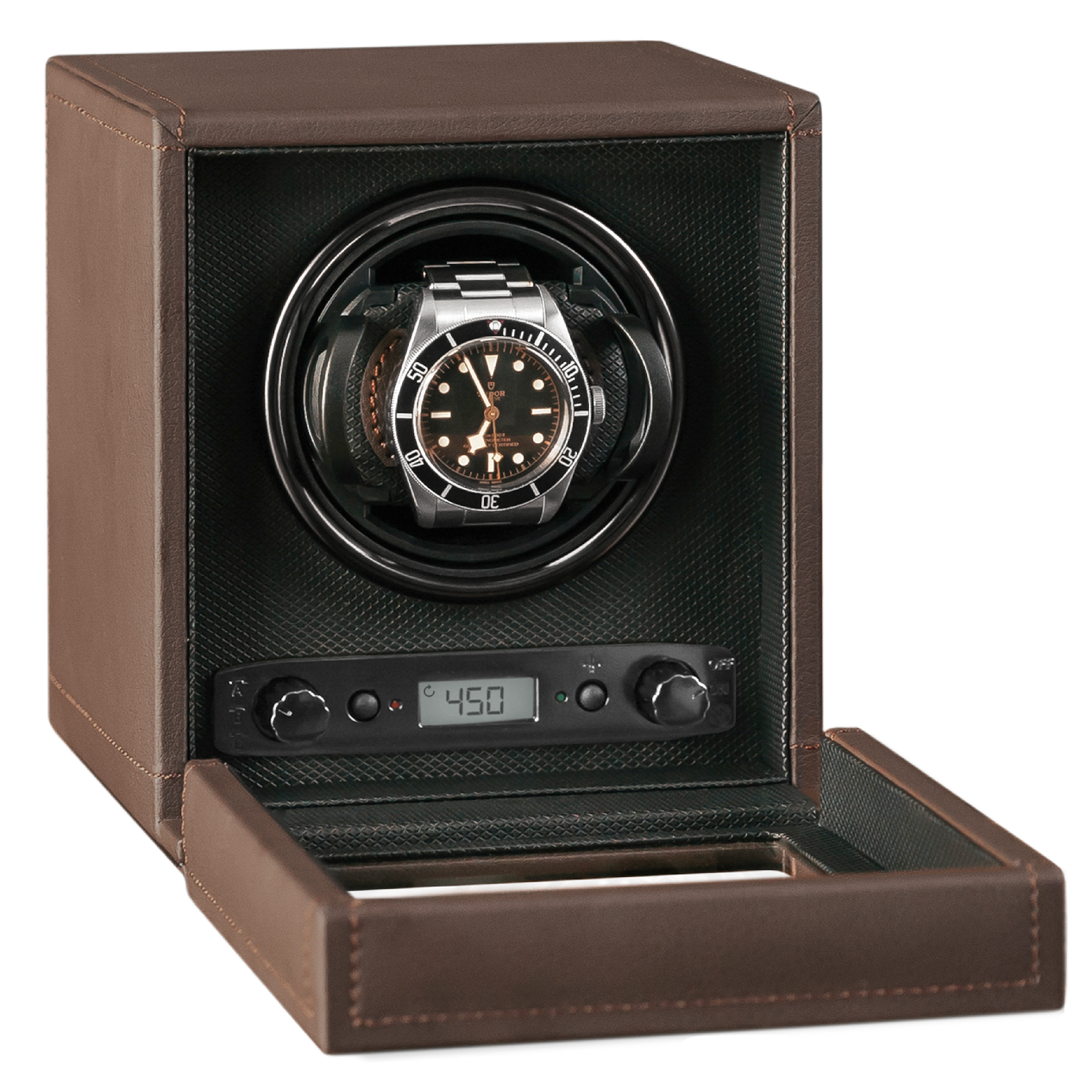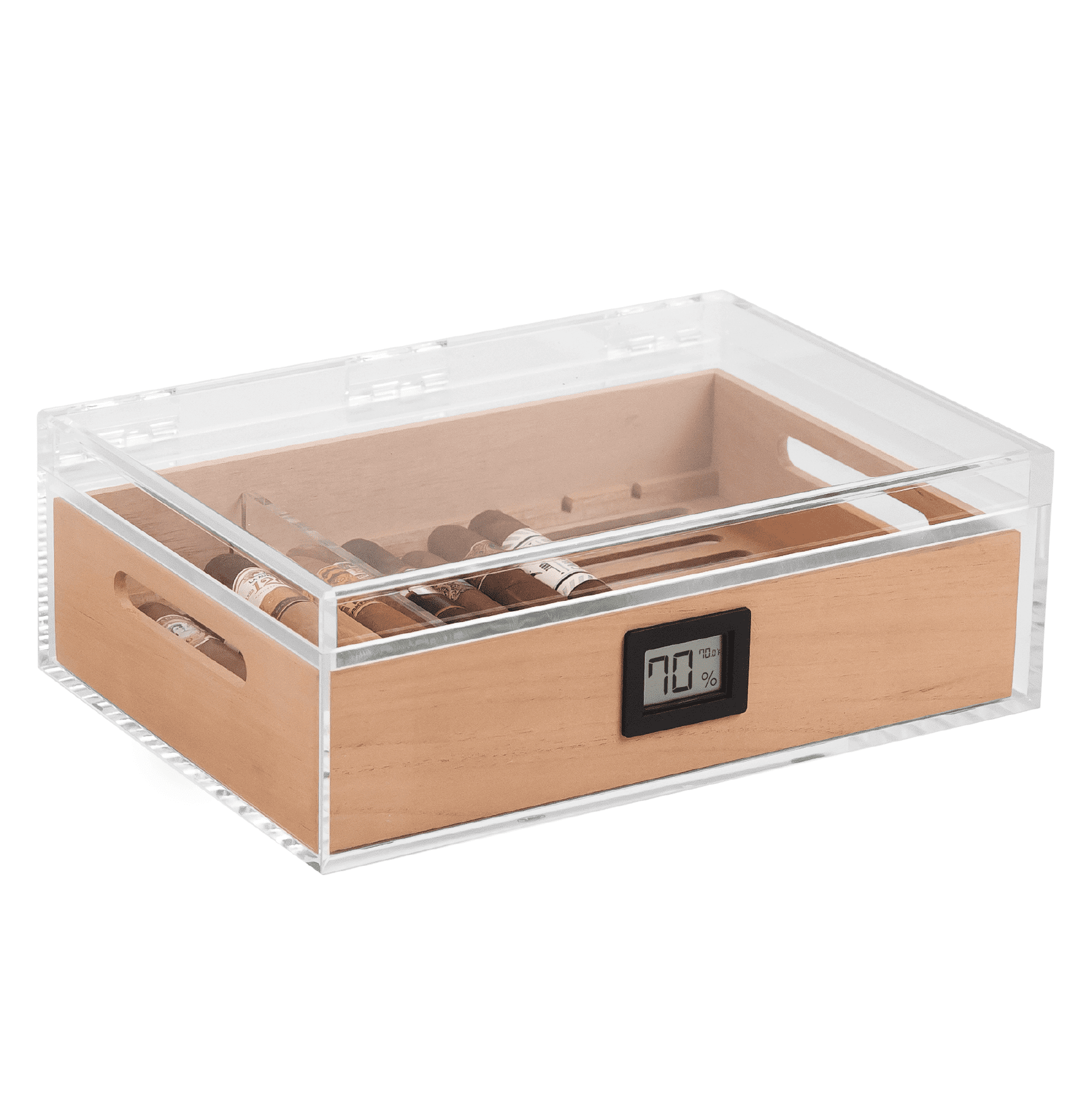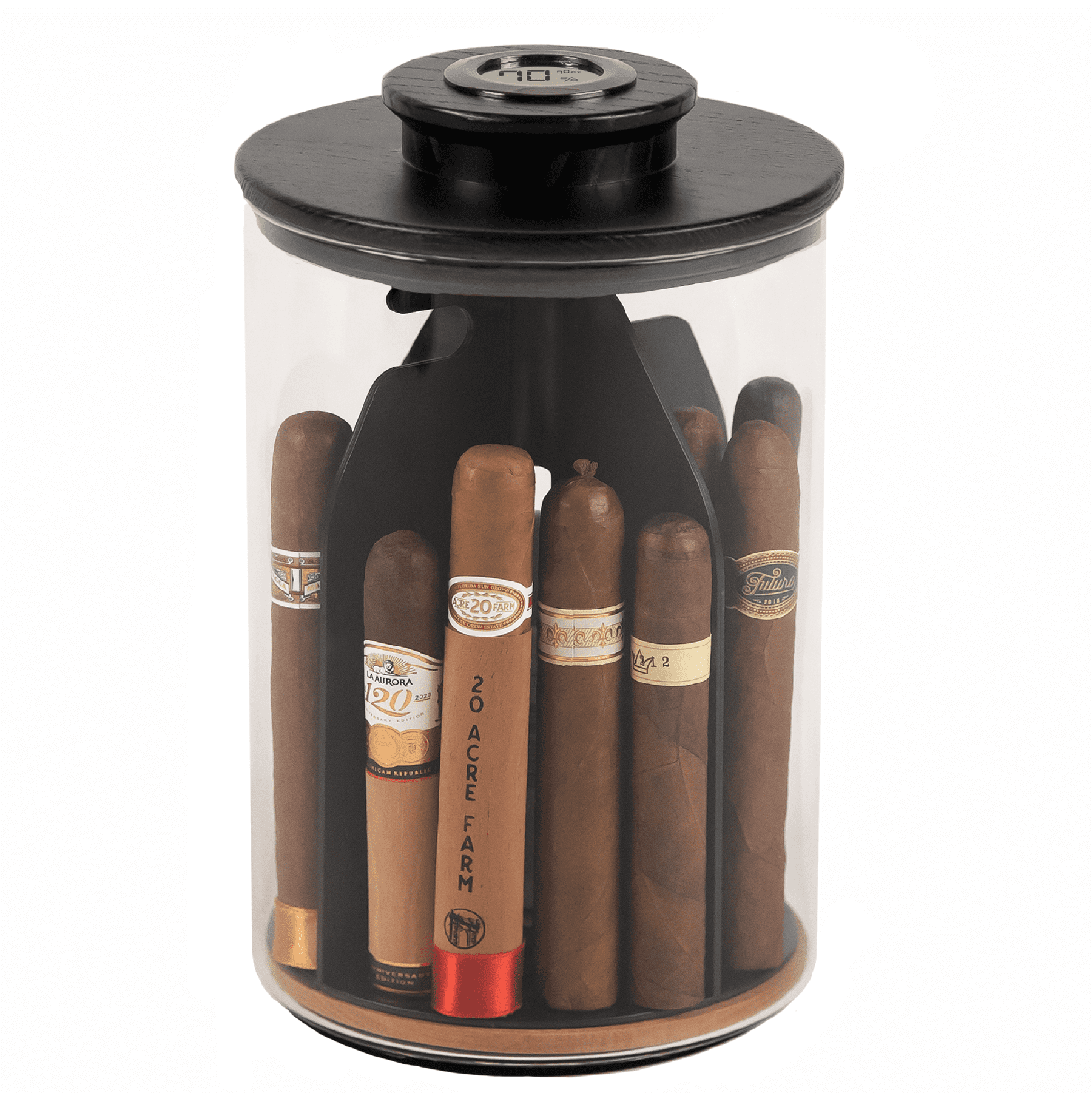The humidor market is vast, and your choices are extensive–even to a fault. There are a lot of options out there, which is great for finding what you want and what’s right for your cigar collection. But without a careful eye and an understanding of what makes a quality humidor, it’s easy to fall prey to low-quality humidors that could end up costing you in valuable cigars that dry out, or worse. Luckily, you don’t have to rely on trial and error to discern the wheat from the chaff.
When you see humidors for cheap, does that indicate bad quality? Not necessarily. Affordable options exist, but then there’s too-good-to-be-true. On the flipside, you’ll find high-end, high-dollar humidors with serious problems. The lines get blurred often between quality, affordability, and aesthetic.
Whether you’re looking for your first-ever humidor, want a second option for your office or for aging cigars, or if you’re gifting a humidor, complete an internal checklist to ensure you stay clear of the imitators. Here we’ll look for the warning signs to help you evaluate any given humidor, regardless of brand, size, or type. Any humidor worth its salt will stick to doing the basics well.
1. Compensating High-end Humidors
Beware the high-end humidors with bells and whistles but no substance. Performance comes first, so raise a caution flag when you come across immaculate humidors with a lot of frills.
When experts put high-end humidors to the test, they found some humidors that were aesthetically beautiful but functioned poorly. The manufacturers of these duds will include ornate exteriors, quality hardware, unique accessories, and uncommon designs, but the humidor won’t hold a consistent humidification level, and the cigars will suffer.
How to avoid:
When you consider a high-dollar humidor, check the basics, and prioritize the interior. Does the humidification system and its location in the humidor make sense, and is it built from quality components that fit? Are all components of the interior made from Spanish cedar? If not, what reasoning does the manufacturer provide for using any other material for the interior?
When the manufacturer focuses on the aesthetic quality of the humidor instead of its performance, check the basics.
2. Affordable (and non-functional)
We know high-quality, affordable humidors exist that don’t gouge your pocketbook, and we recommend you find the right humidor for your budget. But cheap, non-functional humidors also plague the market. These aren’t worth any amount of savings because it’s money down the tube. And, after a month of poor performance and potentially ruined cigars, you’re back to the drawing board with less money to invest in a quality humidor.
You don’t need to shell out major cash for a functional humidor. Even humidor DIY projects like tupperdors can work with the right amount of care–and the trick is the seal. The leading cause of cheap humidors that aren’t functional often comes down to a bad seal and an inability to hold humidity. After all, that’s the primary function of a humidor.
How to avoid:
Read reviews, look for humidors with magnetic seals or other proof of a good seal, and physically inspect your humidor if possible. Lastly, if you do risk it and invest in a humidor for cheap only to find it’s non-functional in holding humidity levels, don’t hesitate to contact the manufacturer/seller for a refund.
3. Insufficient Humidor Humidifier
You can learn a lot about a humidor by researching its humidifier. The humidification system of your humidor is responsible for providing the humidity needed to protect and preserve your cigars. Without it, no amount of Spanish cedar and no degree of seal will work, and your humidor won’t function as it should. It needs a humidification source. Otherwise your humidor will quickly dry out any cigar you store.
There are two main problems to watch out for when it comes to humidifiers. The first: insufficient type for the size of the humidor (i.e., humidor packs and gels for a large, multi-level humidor). Or the second: faulty or cumbersome design (i.e., wrong placement, poor performance, insufficient quality). Often, humidors with humidifiers that rely on sponges and simple water will require too-frequent refills.
How to avoid:
For smaller humidors, you will find standard humidifiers like gels, crystals, humidor solution, or humidor packs to be common. These work fine, but you want to ensure their placement increases exposure to the air, like the Hydro Tray, and that they are sufficient for the size of the humidor. For example, a humidor pack won’t suffice for a humidor cabinet. You’d need an electric humidifier, and you’d want to ensure it was placed at the bottom of the humidor or in a location that increased airflow.
4. Bad Hygrometer Placement or No Hygrometer
How do you know if your humidor is doing its job? If the hygrometer is reading correctly, for one. Two things can go wrong here when a hygrometer is used: it can be located in an area of the humidor that doesn’t provide an accurate reading, or the hygrometer itself needs to be calibrated. When your hygrometer provides an inaccurate reading, you don’t have any real sense of what humidity your cigars are storing at, which can be especially problematic if you live in an area where humidity changes drastically season to season.
Hygrometer placement can matter, especially when the hygrometer is built into the humidor of a larger size. Typically, it’s best to include near the lid to have exposure to airflow. Many humidors have different mounting locations for the hygrometer, and it’s easily removable so it can be calibrated or moved.
How to avoid:
If you have problems from the start, it could be a quality issue. And what if there’s no hygrometer included with your humidor? Well, that’s answer enough. Don’t buy it. The benefit of a built-in hygrometer is that it leaves more real estate for cigars.
5. Poor Seal Quality
Poor seal quality doesn’t just affect low-cost, low-quality humidors. Even some expensive, otherwise-capable humidors fail due to a bad seal. When the seal is bad, all the other components have to work overtime to attempt to maintain humidity levels–and often without success. Seal quality can come down to construction. If any materials warp, bend easily, or are too lightweight, you won’t be ensured an airtight seal.
Why does it matter so much? A quality humidor should last you for the long-haul. A humidor antique, for example, can function incredibly and with age-refined traits if it was carefully crafted with longevity in mind. A bad seal is indicative of poor craftsmanship across the board, and, if your seal isn’t functioning early on, it will only deteriorate with time.
How to avoid:
Inspect humidors prior to purchase and take note of the opened lid. If the quality of connection seems shoddy, it won’t stand up to the test of time. Employ the use of tricks like the dollar-bill test when trying out a new humidor: place a dollar bill on the seal when opened, and then shut to see if the dollar bill easily moves upon pulling. Check each side of the lid with the dollar to ensure a proper seal.
Also, feel the weight of the lid. Lightweight, cheap humidors won’t have a strong downward pressure to ensure a good seal.
6. Alternate Interior Humidor Wood
Using Honduran mahogany and American red cedar on the interior of humidors are common alternatives to Spanish cedar–and their use isn’t a hard-stop indicator that the humidor won’t function well. These woods share qualities that allow humidity to “breath” appropriately throughout the box. But it’s worth raising an eyebrow when you see these in the descriptor of a humidor.
How to avoid:
Honduran mahogany and American red cedar are far cheaper alternatives to Spanish cedar. If you see these used, it’s wise to take a closer look at other components of the humidor to catch any other cost-saving measures that might affect the humidor’s performance.
7. The False Promise of Solid Wood Construction
Most humidors are constructed with exotic veneers on the inside of the humidor, often Spanish cedar. The exterior of the humidor is then constructed with a wood like cherry. The reason for this isn’t just saving money on how much Spanish cedar the manufacturer has to use: exotic woods like Spanish cedar are softer and more susceptible to damage, dents, and splitting. When a humidor is solid wood from exotic woods, it’s not likely to hold up or function well–and you’ll be paying a small fortune for it.
How to avoid:
Hold manufacturer marketing to the test. When they boat a solid wood construction, it had better not be Spanish cedar. Instead, the exterior wood should be constructed of an alternative that makes more sense for the performance of the humidor and not the false promise that more expensive materials mean a better humidor.
Parting Puffs
These are just seven of the many warning signs we’ve seen when perusing the humidor market. The more you explore and become familiar with what differentiates a quality humidor from a cheap replica, the better your bullshit detector. When you find a humidor that works well, study its components, identify manufacturing and design chocies that seem to influence its ability to maintain humidity, and note when differences in other humidors have a negative effect.
Klaro humidors are designed for the conscientious cigar enthusiast. We’ve combined years of cigar smoking and storing experience to find the models that we know will protect our collections and ensure the best smoking experience possible. Check out our line of humidors to find a style and size that matches what you’re looking for in a humidor, and know that we stand by the quality and construction choices of each.














